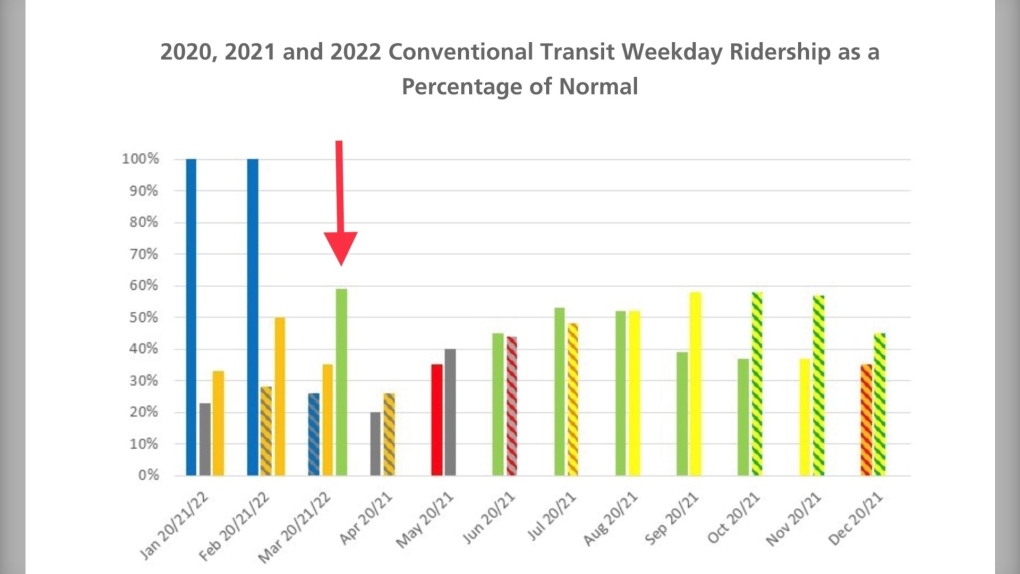Hard hit by the pandemic, bus ridership is experiencing a rapid recovery this month.
London Transit reports that the number of passengers has returned to 60 per cent of pre-pandemic levels on weekdays, 80 per cent on weekends.
“The levels we have seen in March are the highest we have seen throughout the pandemic period,” explains Kelly Paleczny, general manager of London Transit.
The sudden rebound comes on the heels of the Omicron wave of the COVID-19 pandemic.
London Transit is observing a growing number of commuters and post-secondary students returning to their previous travel patterns.
“It went from like four or five people on [the bus] compared to the last bus I was on it was almost completely full,” says Jennifer Kenna, a frequent London Transit passenger.
“There’s a lot of Western students coming on,” says transit rider Scott Keck. “Sometimes people have to stand because there are no seats.”
Progress is also being made on a pair of internal challenges at London Transit that were exacerbated by the pandemic — scarcity of replacement parts and a shortage of bus drivers.

However, a severe shortage of bus transmission fluid is looming in North America.
Once a class of six newly hired drivers graduate their training this spring, London Transit will return to its full compliment (436).
Meanwhile, bus service in London is still operating at 90 per cent.
Paleczny says progress on those internal challenges will allow service improvements that will increase bus frequency.
“Where we return to 100 per cent pre-COVID service, and also begin implementing the 2021 service improvements which have been on hold and continue hiring through the summer to implement the 2022 service improvements,” she explains.
London Transit still has sufficient provincial pandemic relief funding to offset a projected $2.7-million revenue shortfall this year.
Barring another significant wave of the pandemic, Paleczny expects ridership and revenue to return to normal next year.
“The budget anticipates that by the end of 2022 we should be back to pre-COVID ridership levels. That’s our expectation,” she says.